Feature 19 min read
Discover EV picks the brains of Eric Bach, Lucid’s Senior Vice President, Product and Chief Engineer since March 2021.
It is little wonder Lucid chose the 2022 Goodwood Festival of Speed as a venue for its first ever public display of the Grand Touring Performance. As well as allowing potential European buyers the opportunity to get familiar with Lucid’s products ahead of deliveries – slated to begin later this year – it wowed the crowds up the 1.6 mile hill climb course, taking took top honours as the fastest production car. It also gave us the opportunity to talk to Eric Bach, who was very forthcoming in how and why Lucid is one of the best EV makers.
First of all, congratulations on your times this weekend in the Air Grand Touring Performance with Ben Collins, AKA the Stig, behind the wheel!
Thank you. We’re very proud of our time – 50.79 seconds – it was great to beat the likes of the new Aston Martin V12 Vantage to claim the production car category. Your readers can watch the video of the run on YouTube.
It’s a great feat. For those that don’t know, please could you explain what you do at Lucid? What’s a typical day for you?
I get to work by 8.30am latest and typically we immediately start engineering. I am responsible for all of the products cross functionally so that’s air, gravity and future products, as well as charging and third party tech projects, like energy storage. Right now, the core focus is on gravity for the SUV as well as ensuring we have flawless rollout of subsequent models of Air. So right now we’re sitting in a Grand Touring Performance, that’s one of the latest launches. Previously we launched the Dream editions and the Grand Touring. Next will be the Touring and then the Pure. This model has more individual components – it has a fixed roof for example, so there’s more engineering involved, and that’s what we’re working on, as well as European homologation for when deliveries start later this year.
When are we talking, October?
Erm, a little bit later, end of the year, but we’ll ramp up into early next year.
Any plans for the UK?
In the future… We are recognising a huge interest – it’s insane how the people have been reacting to the three cars we have here and despite the fact we’re displayed among the Porsche Taycans and Mercedes EQ range crowds are flocking to Lucid. It’s so heartening to see that. It looks super clean, super modern, and then they look inside and see a 37 inch screen – a software product essentially, and hear about the performance, I think it’s a good sell.
There is a lot of love for Lucid. And this is a beautiful car.
I saw this in development from 2015 and I think it still looks fresh, cutting edge – it doesn’t look like any other EV – so many of our competitors’ cars look so boring. I’m glad I worked on this car.
As former Director or Engineering at Tesla Motors and prior to those 12 years at Volkswagen in a variety of engineering and program leadership roles, how instrumental was your experience with these brands to pushing things forward with Lucid?
Most people take advantage of every phase in their life, take and gain a lot of knowledge and experience in what they want to do different next time or what they want to keep. So at Volkswagen, during my formative years in automotive, it was all about attention to detail, attention to cost, and strong brand culture. I was lucky to be hired into a start-up within VW rather than thrown into regular engineering departments – and that was what attracted me, and the idea was to in-house a lot of the technology development, rather than writing specs and having the suppliers do the work. So we engineered components and a system from the ground up inside – and that was unheard of. The reason was the systems were then going to be built within the manufacturing plant as tier components – that’s instrument and door panels and fuel tanks. We were mostly a team of fresh-grads. I learnt so much and it was a foray into a start-up world within a big car brand and that led me to become chief engineer on a project in Michigan, our centre in America, working with Chrysler.
I came from this VW world with precision zero gaps and so on, and Chrysler were like ‘oh, huge gaps, don’t worry – throw it over to the supplier’. But I changed that and made a much better product and I think they learned a lot and I learnt the difference between the German and US approach to engineering. There were still a lot of good things about what they were doing in Michigan so I could combine and synthesize those. I went back to Wolfsburg and then did product planning for Joerg Muller who became CEO and MD of VW, and learnt what it takes to make a car. It is not just about the engineering, you need to have a good business case; you need to know where to manufacturer, think about the customers and so on – the whole thing. By now I gained huge amounts of respect and appreciation for what I did for Volkswagen.
I then jumped ship to Tesla. So while I was at Michigan I got to meet Peter Rawlinson [CEO of Lucid Motors and known for his work as Vehicle Engineer of the Tesla Model S] and he interviewed me to bring me into Tesla – that was back in 2009. It was a little bit early and I was scared, and I had the offer from Muller to advance my career further with VW so I chose them. But in 2011 I got a little fed up with the electric strategy and I saw all of the cycle plans and thought this is taking too long. Tesla called again and Peter hired me. I knew we were spiritually aligned – the way we think about engineering… We are very well synced up.
I got thrown into a half finished Model S and we launched it 7 months later. Crazy times. I had eight engineers for huge amounts of work, so first I had to hire people. When I left I had 52 in my team. When we launched the car it still wasn’t finished – lot of 3D printed parts and prototype parts cobbled together. A lot of thought had gone into it but it was just not done properly. We were then thrown onto the line as we had to educate the manufacturing staff and build the equipment – so taking the product from engineering through a launch and helping manufacturing getting the tools and processes right, manning the quality station at the end of the line and being essentially responsible for what gets handed over to the customer. That entire path was insanely great and I bought cost reductions from VW and at Tesla we had to do that. And then Peter said how about you do that again from a clean sheet of paper? By now I was no longer afraid as EVs were definitely the future and Tesla was really successful, and so I joined him to help launch Lucid.
And how were things different at Lucid?
It’s been a series of ups and downs but it’s always been absolute fun – unlike at Tesla where there were too many negative emotions behind it. At Lucid we try to do it right – it’s going back to physics, fundamentals of engineering, gelling over ideas and bringing the right experts – world class talent, and making a phenomenal product. And with all the lessons learned you have to watch out for cost, think about manufacturing technologies, the processes, you need to bring up all of those capabilities in parallel and be kind to your teams and draw the out the best of them, otherwise you don’t get something like this done. This vehicle is at least one order of magnitude more complex than what we launched in the Model S. The Model S had just one single camera and that was the rear facing, so zero ADAS, we have a full 32 sensors suite all beautifully integrated – people can’t even see them. It’s got a LIDAR in the nose! That art and science integration has essentially been the fuel to keep you going during the long nights and during any unpleasant surprises – funding has actually been something I’ve learnt at Lucid.
That was something I was going to ask you – how difficult was it forging relationships and overcoming costs with third parties, especially with so many other EV start-ups all competing for funding?
There are indeed many, but you need to look at them a little bit by region. So in China, you’ve got 500 or so, but it’s a strategic move. They know that 95 per cent are going to die, but they want to build their own economy and no longer rely on the old OEMs and old world sucking up all the money out of the county. In the US, there are these entrepreneurial types that are like ‘hey I can do it too’. So, there was Nio, Byton, INDI EV, Canoo, Faraday Future and Detroit Electric, so at least a dozen if not 20, and they all said ‘we’ve got the next big thing and going to make Tesla look small’. And that was really tough from a talent acquisition perspective – who do you trust, from a capital attraction also. And that was hard as we were always die-hard engineering and product focussed and others were more show focused, at least it felt like that to us.
So, we still focused on developing the world’s next gen powertrain and it’s out there – nobody else has anything else so power dense. We were nerding out on engineering and we designed new headlamp technology that no one else had thought about in parallel with funding. But it’s really hard for an investor to know who’s real and who’s not, so it took us longer than we would have hoped for. And in that time the team was dwindling as we were cash-strapped, we cut spending to bare minimum – we were essentially fiscally prudent and trying to keep everyone motivated but giving them the task to develop a world class product – while the others sourced stuff from suppliers, who were spec’ers and spending more time on showmanship. Once we got funding we didn’t have to look back anymore, we just steam rolled full speed ahead and got to execute this car. First we had to hire back the team, we had about 83 engineers left in the company and you can’t make something like this, we had 140 in total that’s including HR and finance. So we had to hire back and hire big while we were engineering and deciding our SOP, but we still pulled this off in record time. There was relentless attention detail, data is king. We see others who have fallen by the wayside because they did not focus on the product, and the product is what builds the brand, and it then sells itself if it’s superior.
So, on that note what do Lucid vehicles offer that rivals don’t?
Well look around you. It is pure quality. It makes you feel special. I feel serenity, I feel luxury, but it’s not shouting ‘hey I’m expensive’ – like some brands. If I want to spend my money I want something that’s beautiful and that I admire, and that I really love driving. It handles like a Lotus, it is super nimble – Ben said to me: “Once you flaw it, the thing feels even lighter”. It has a plush ride like a Mercedes S Class, and it’s a Porsche Taycan in terms of performance – it gives you everything. It has got insane space inside, it’s modern and futuristic but not loud, you know it doesn’t look like a Batmobile, it has got this duality built in. That’s how I feel about it, I love the interior, exterior, I drive it every day to work and I can’t imagine driving any other car. We do have a Tesla, but my wife uses it to put the dog in the back as I don’t want it in my car!
So what kind of economy do you get?
So the Grand Touring version of this car – which is the equivalent of the Tesla Model S – would do 4.6 miles to the kWh EPA – which is fairly conservative as it’s really challenging, and more of a true range than the WLTP calculations which are a little less stringent. So it’s very efficient, which is one of our core things. From an aero perspective we set out to make the most efficient car, so it has a super low drag co-efficient of 0.2 – it’s got a very small projected frontal area – CDA, which computes to a drag force. It’s shallower, narrow and shorter than a Model S yet inside it’s got more leg room in the second row than in an S Class long wheel base. So we’re saving on external footprint – 10 inches or more compared to the Mercedes but we’ve got more leg room, and it’s super manoeuvrable like the E Class.
What are your other key differentiators?
We have a cab forward design, which also gives you that room back there, and it changes the silhouette of the car, more supercar-like. Now, you need to disguise the fact that your cabin is so long but I think we’ve done that – we’ve got a shorter hood but still a 280 litre frunk, and that’s the biggest in the industry by the way. How did we do that? It’s attention to detail in the 3D package. So solving the 3D puzzle of where everything needs to go, being super-efficient and precise about it, miniaturising the powertrain to that box out there. That is the drive unit, or others call it the e-axle, it’s got the electric motor, the differential, the transmission and the power electronics and oiling system on it – that thing is 74kg and has 670hp – it is three times as power dense as the Porsche Taycan that weighs 174kg and does less than 500bhp so I don’t want to call anybody out but it puts things into perspective. The volume of this is the smallest in the industry for this power class and by miniaturising we can package nicely around it and therefore have that insanely large frunk.
I mentioned the lights – we reinvented the lens technology, or headlamps, typically it’s either reflectors or single bulk lens optics and we’ve gone to micro lens array technology. The easiest way to explain it is if you compare a human eye with one iris with a single bulk lens and an insect with thousands of facets. We’ve got about 9000 optical channels on the front of the car, like many insects, and they’re like mini image projectors. Each of them is a little image, a piece of a puzzle – and we overlay all these 9000 channels in the fore field of the vehicle and achieve a super homogeneous evenly distributed headlamp that is brighter than our competition. It reaches further – you have much better visibility, it’s not streaky or patchy – like an S Class, you see everything really clearly, with no rainbow stripe apirations on the side of the light field. The conversion from the electrons that we push into light is super-efficient, too. It’s also changed the form factor (hardware design) of what a headlamp looks like, in that it is super shallow, so we could make this 13mm high nose blade design – nobody else can achieve that other than by throwing away 90 per cent of the light. We’ve changed the focal distance in the light projectors and therefore reduced the volume and mass of a front headlamp, which has also meant we have been able to increase frunk space. It’s thinking about technology from a usability and user perspective. From changing the lights, we have more space, better design, more efficiency, better light and better drag co-efficient. It’s incredible all the synergies we’ve leveraged just from the lights, who would have thought about that?
Tell us about your Wunderbox?
It’s a charging system – it’s called that because it’s got a semi-German father, and it’s got multiple functions. It’s a bi-directional on-board charger – it does 19.2kW in the US or in Europe in three-phase 22kW, which is twice as much as the competition, and of course, you can charge the car or you can use the car as a mobile energy storage device. It also uses exactly that charging hardware one-to-one with a different configuration driven by software as a boost charger. Why do we need this? This car uses a 924 high voltage system and there are still chargers at 400 volts. Now in order to charge 924 volts, we need to elevate the 400 volts to 924, and that’s what a boost charger does. So we can boost up the DC voltage from those chargers through the AC/DC charger onto our high voltage level. So, we’re saving money by using this one component in three ways – single directional charging, bi-directional charging and boost conversion.
Others like the Taycan put in an extra box that increases volume, mass and cost as they didn’t have the idea or the capability to make such an integrated charging system. We also have an on-board DC convertor inside the Wunderbox that allows us to use an off-the-shelf compressor and heater units that are much lower in price.
The CEO of that car over there, that I can’t mention, famously said: “We chose our battery voltage according to the components that we were finding in the market – the 400 volt components we were just talking about. So these 400 volt components, they connect directly to the battery, we power them up by the Wunderbox. What’s the difference? Their high voltage net is a 400 volt system, this is a 924. If you look at power, power equals voltage times amperage, and they’ve got half the voltage, to achieve the same power they need double the amperage. Now, what does that mean? If we look at the next physical formula, the losses in an electric system – the resistive power losses – are equal to the amperage squared times resistance. So if you double the amperage like they have to for the given power, they quadruable the losses in their system – or the other way round – because we’ve doubled the voltage, we’ve halved the amperage and we’ve a quarter of the electric losses in our systems. And that’s a benevolent cycle – so you want to have ultra high voltage and not lower voltage. And they chose it because they didn’t think about a Wunderbox, and that’s why it’s a Wunderbox!
Another limitation or lower voltage system is the charging speed – the CCS charging system works up to 1000 volts and 500 amps but not both at the same time. So you can either charge 1000 volts at 350 amps, or you can do 500 amps at 400 volts, because the charging system is limited to 350kW. So what does that mean? For us, we can charge up to 924 so we need about 360 amps max and then we max out the charging system – this car is the fastest charging car on the planet because we can charge at over 350kW – that’s the speed of the electrons being pushed into the battery, and we’ve got the 4.64kW miles efficiency and if you multiply the efficiency with essentially the speed capability to intake those electrons it is faster charging. The Taycan has half the range than this car on the same battery size and half the charging speed, that one, again I can’t mention, over there, is limited by the 400 volts times 500 amps to 200kW, so two thirds of our power. So that’s how this all works out –you have to think of the physics to engineer an awesome system that essentially brings power to the customer, faster charging shorter stops and more fun.
As we've now been told to wrap this interview up - I have one more last question... Where do you see the future of Lucid?
Well, I think we have a bright future, we have got a great first product and we’re rolling out multiple variants, down to a starting price of $87,400 – essentially the same as a highly-equipped Audi A6, so I think we’ll have great volume potential. We’re working on an SUV right now, doubling the volume potential, and then going into mid-size. What is the real impact we can have? We don’t want to be a niche auto manufacturer and we’ve developed ultra efficient technologies that lower the carbon footprint of the mile driven. Our powertrains are at least 10 per cent more efficient than the competition and if we can scale that into production and sell those powertrains to many more manufacturers we can reduce as a whole industry carbon footprint by 10 per cent – that would be the ultimate goal – if we could have such a dent on CO2.

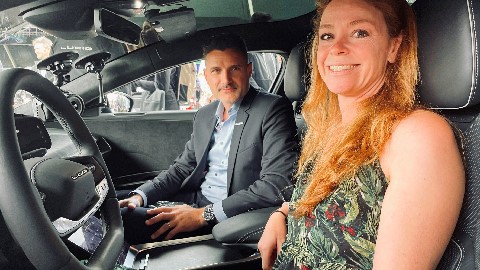
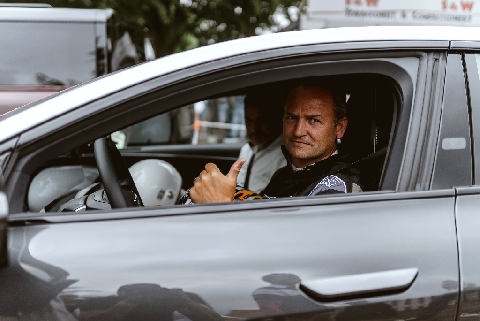
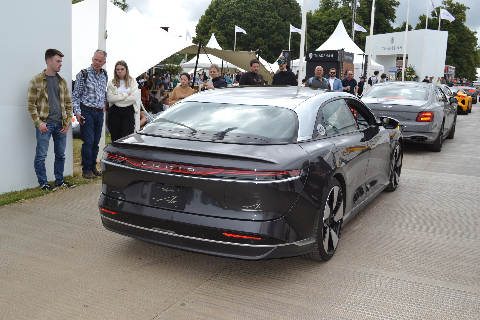
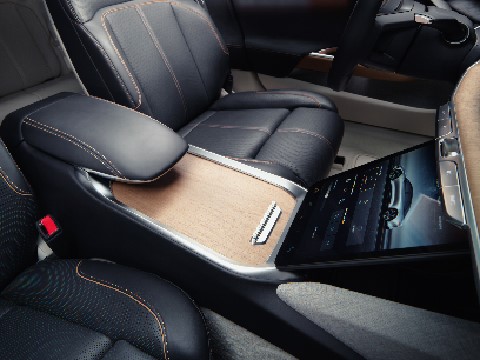
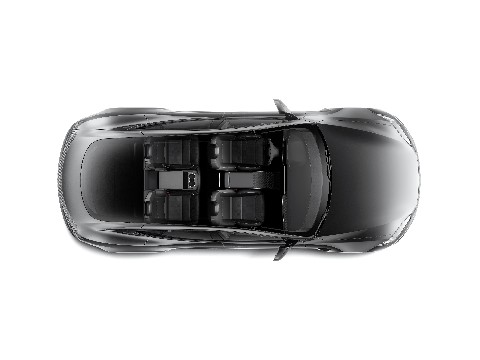
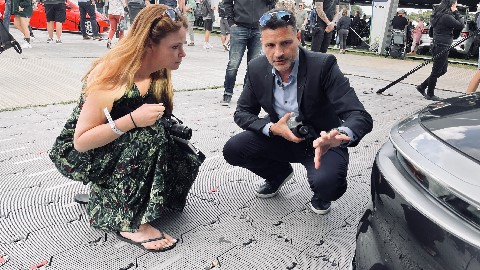
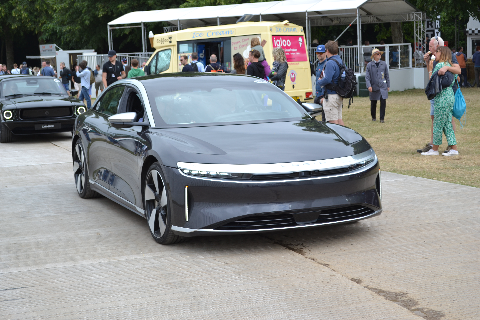
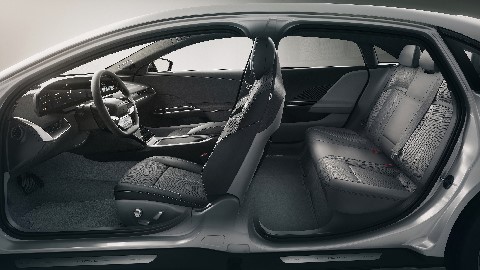
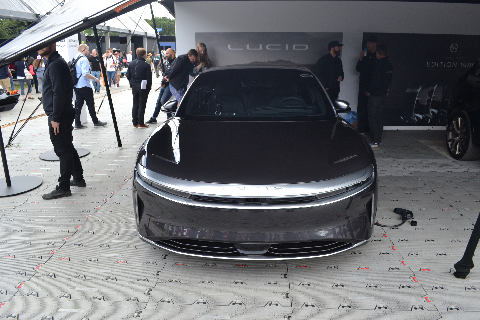
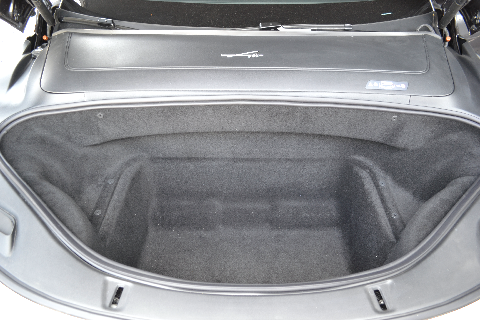
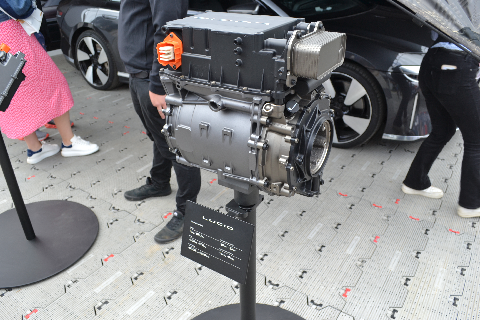
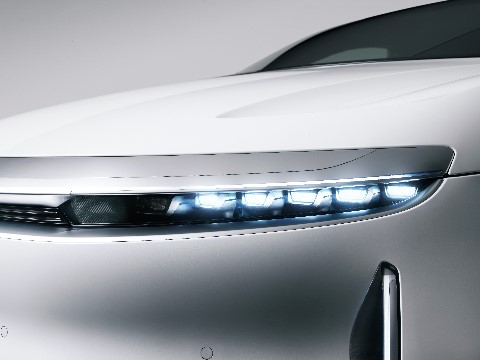
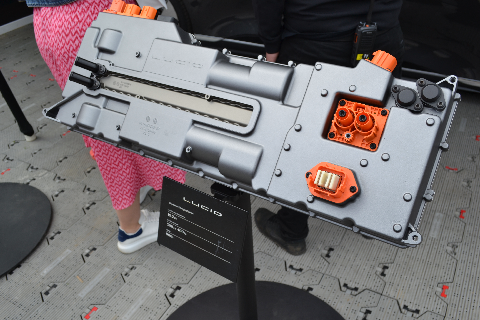
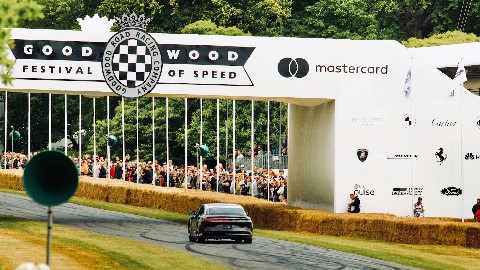

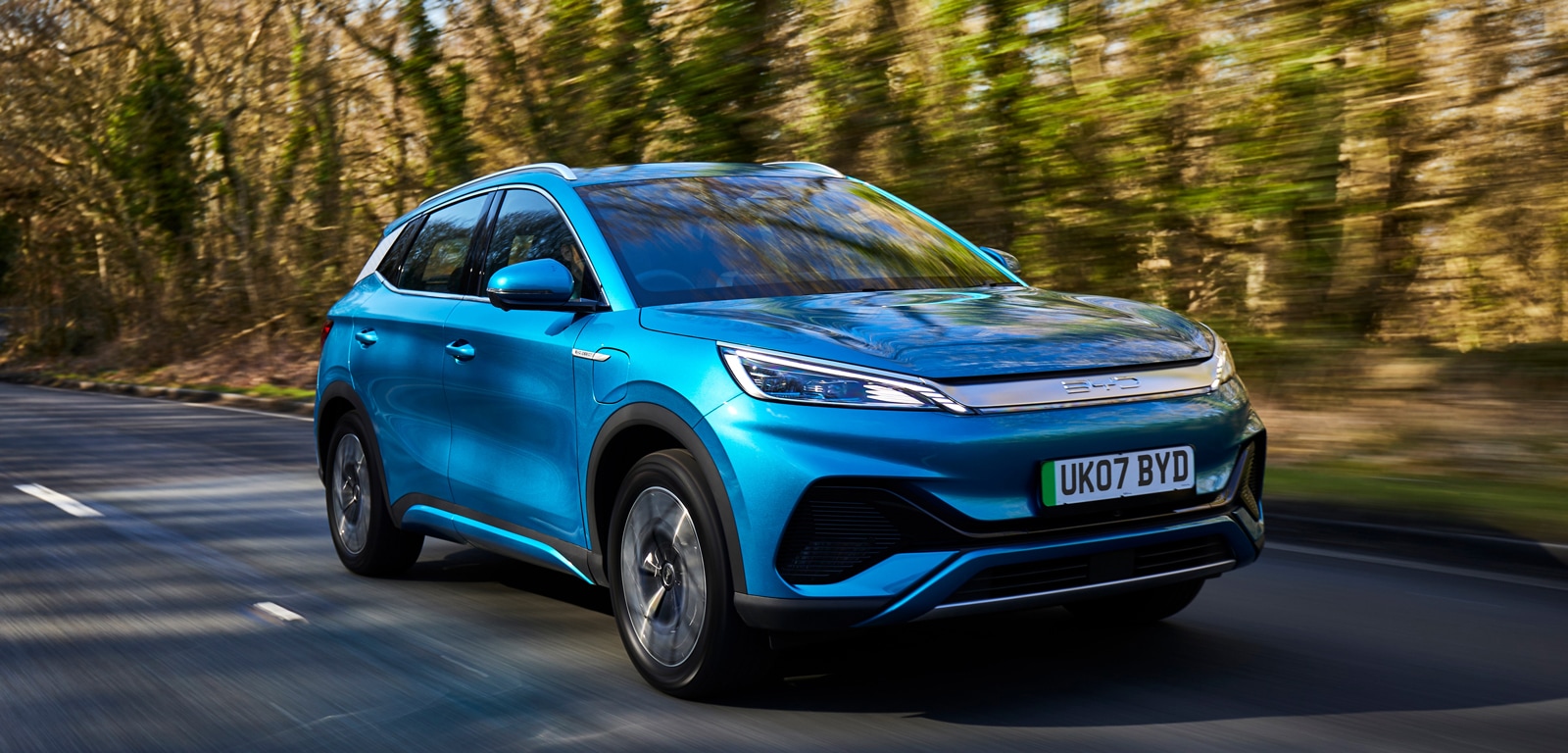
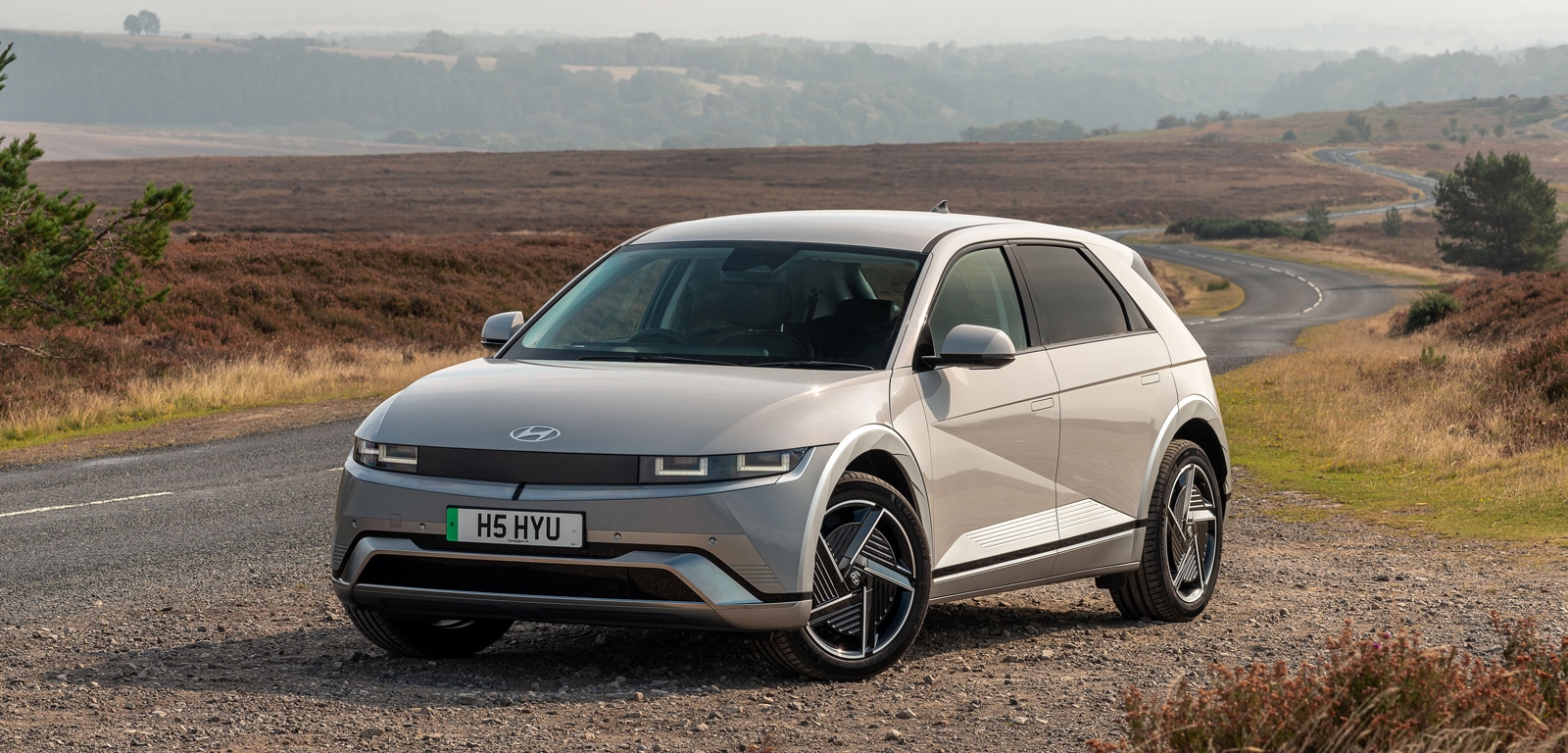
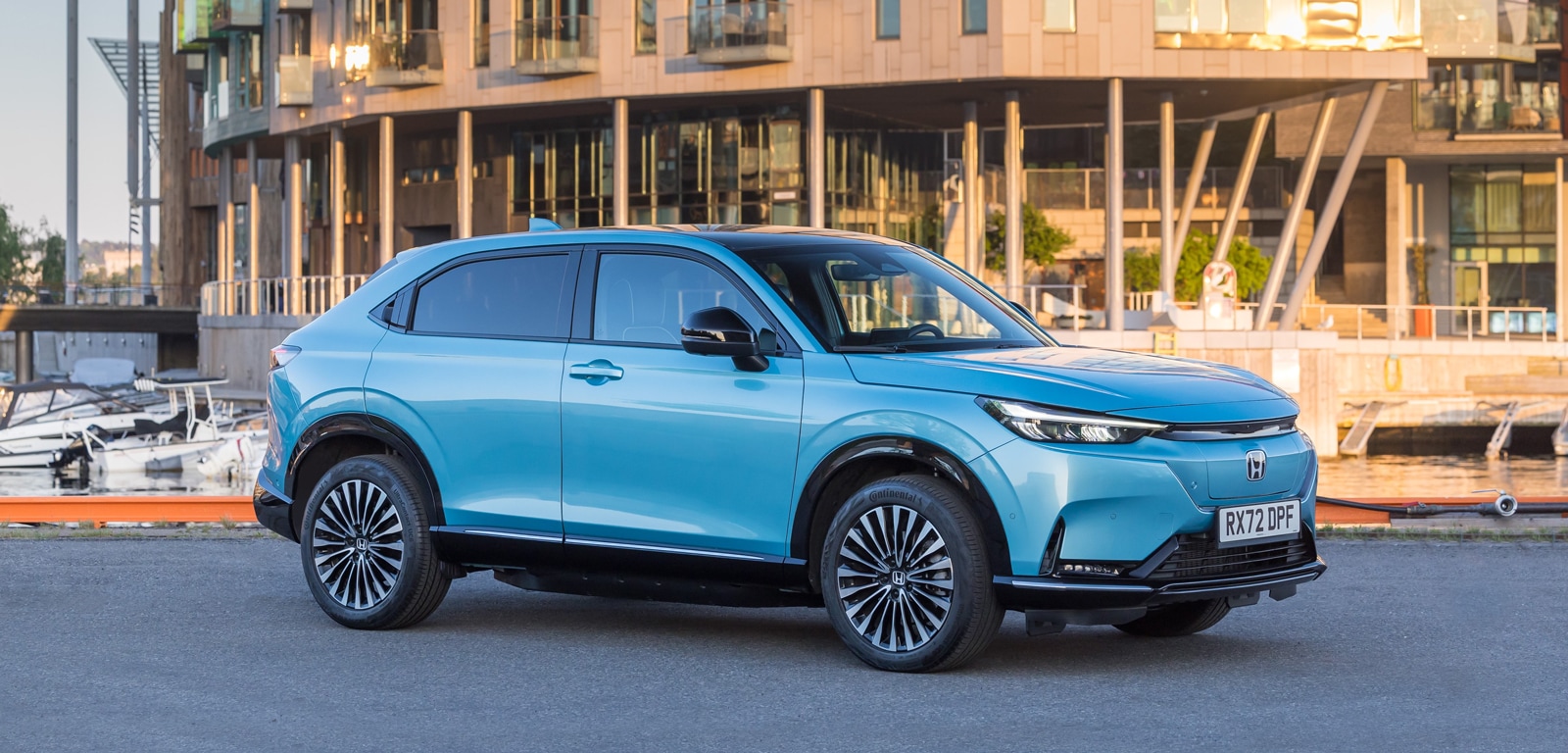
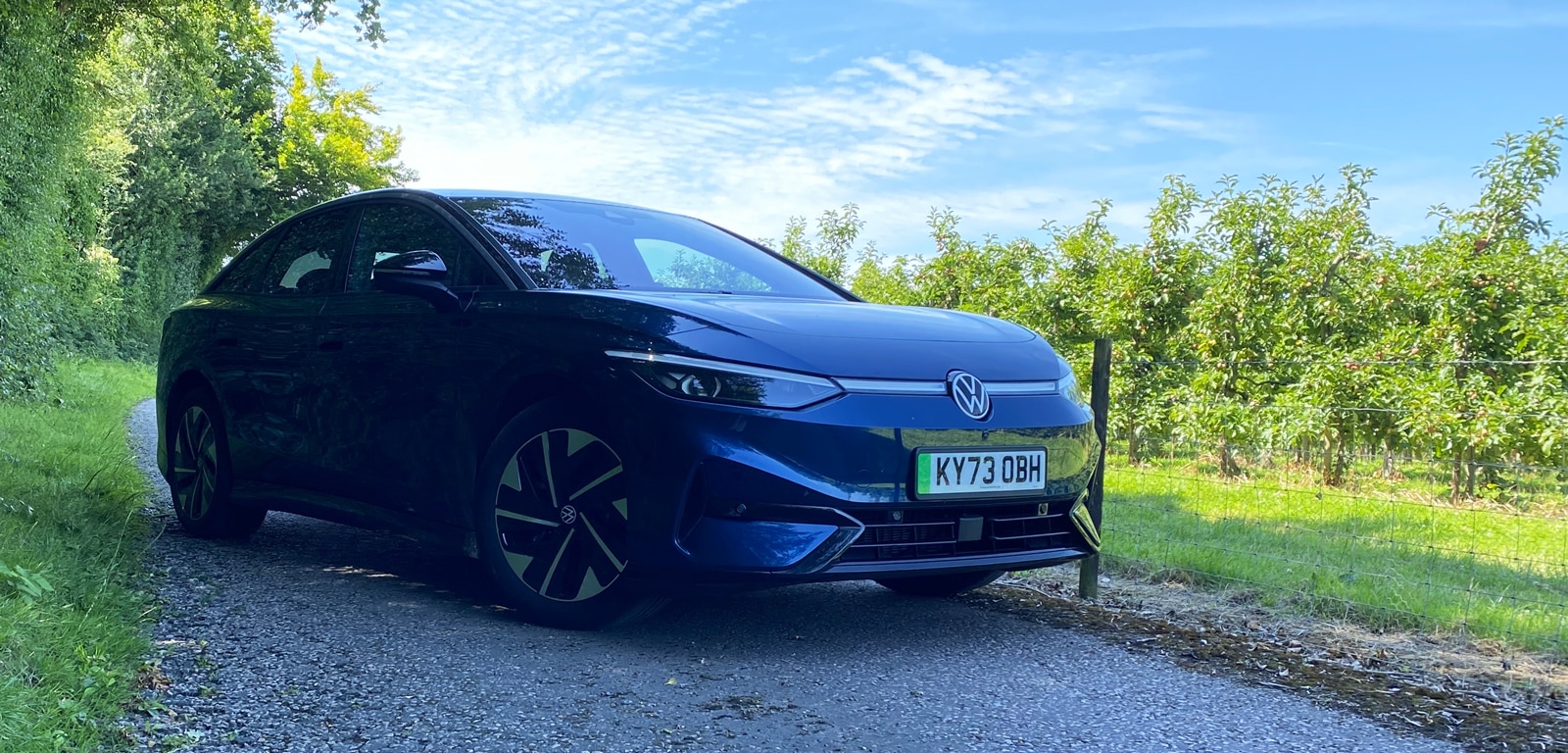
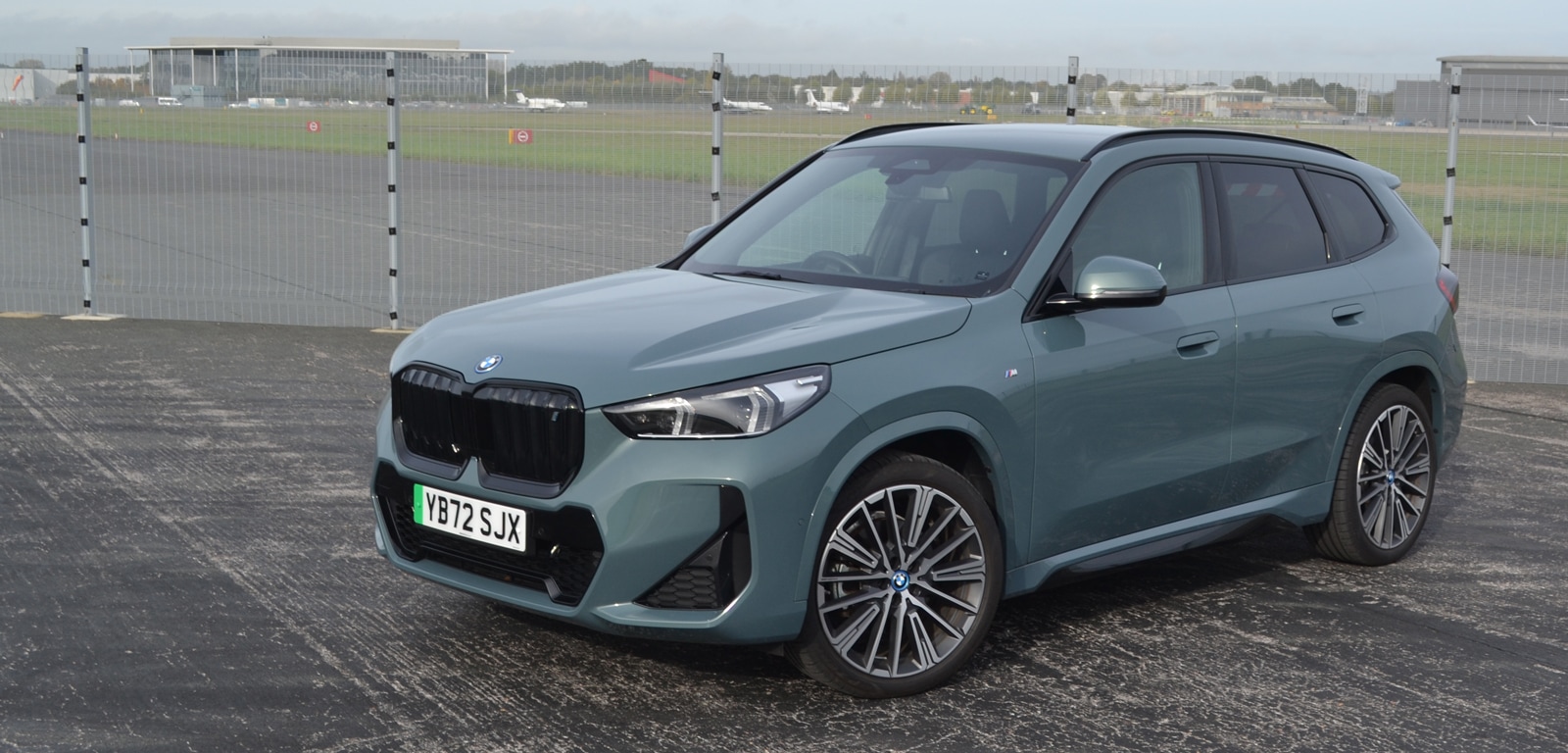


Comments (0)
Be the first to write a comment
Login/ Signup